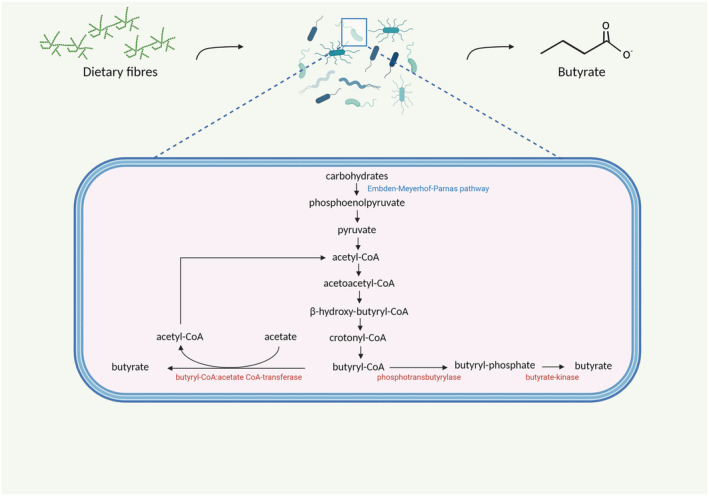FIGURE 1.

The microbial synthesis of butyrate in the colonic lumen. First, dietary fibers (carbohydrates) are broken down to monosaccharides and, subsequently, phosphoenolpyruvate through the Embden–Meyerhof–Parnas pathway. Thereafter, acetyl‐CoA is produced via pyruvate, which eventually gets converted to butyryl‐CoA. Butyryl‐CoA can be converted to butyrate through two pathways. The most common one uses acetate as a cosubstrate to generate butyrate and an acetyl‐CoA molecule and the other, less common, pathway, produces butyrate via butyrate‐phosphate. Both pathways are regulated by different enzymes (indicated in red in the figure). Created with BioRender.com
